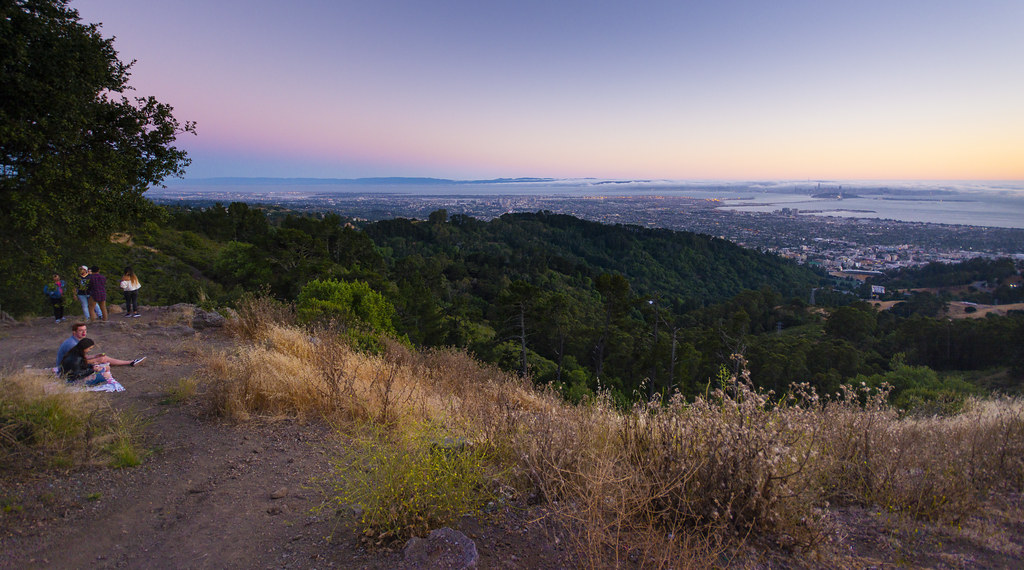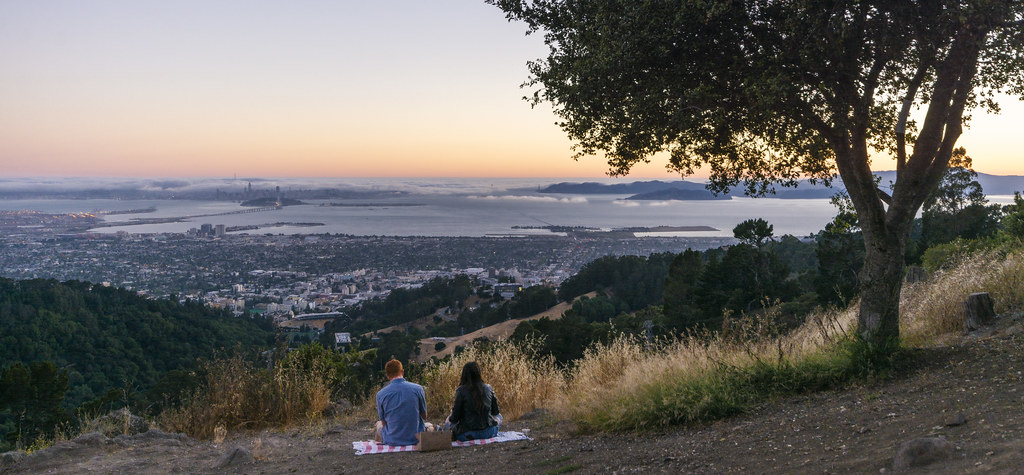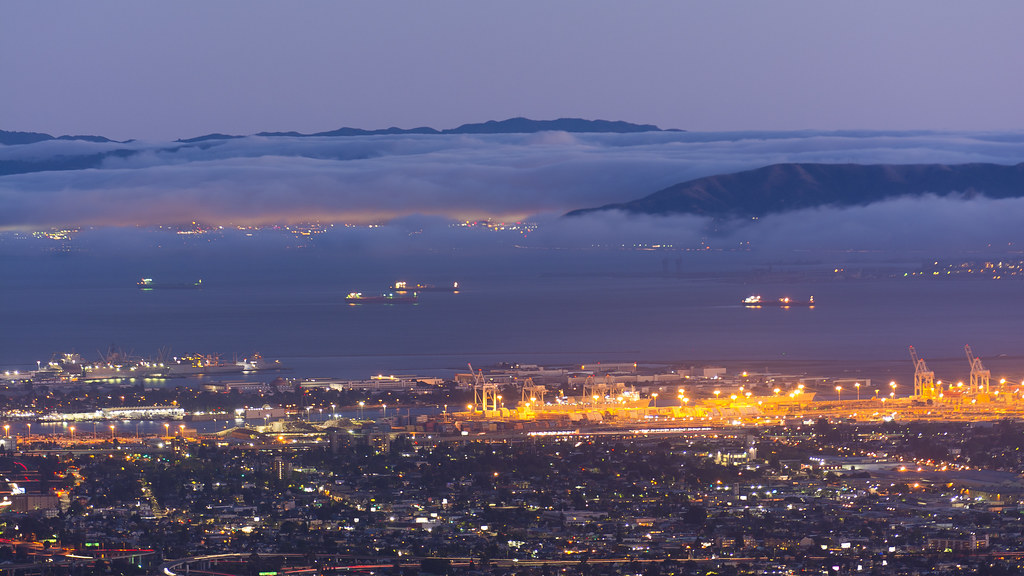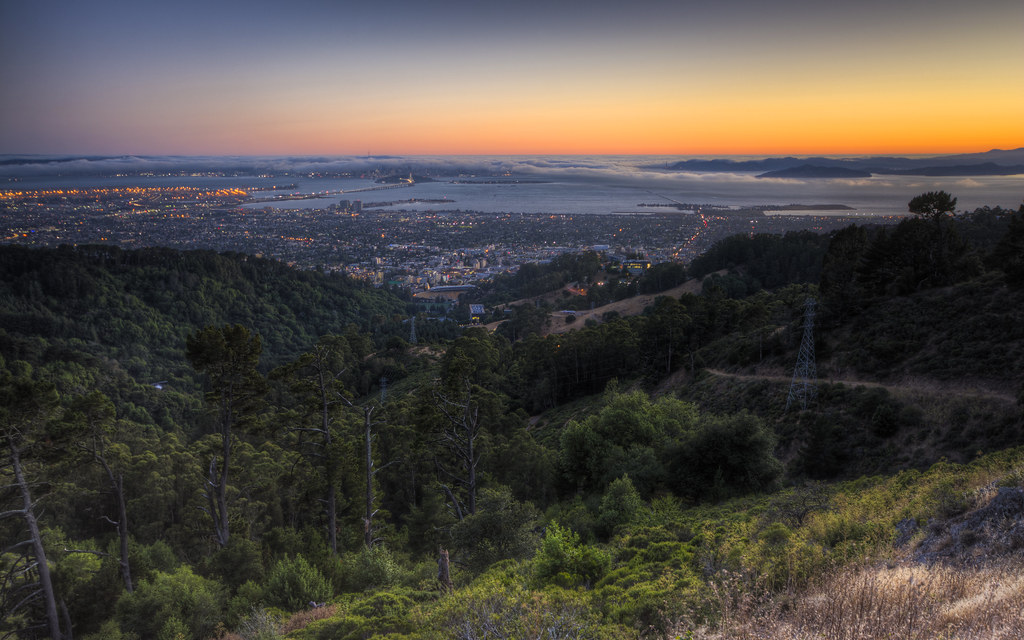Conserved spaces above the noisy East Bay grid make for this incredible reprieve. Though the street lights may shine up here, the sounds are damped over the distance. Lawrence Hall of Science is a popular spot to experience this; I like the contrast in this image between the humans and the city.
Category: Oakland
How Did I Miss These?
A post came on social media from more than 11 years ago reminded me of trips around the Bay Area; comparing my RAW files with the images I ultimately posted to Decaseconds originally left me asking, “How did I miss these?”
In past cases of reprocessing pictures, I took another approach to images I already knew were solid. This first image today, boat sailing near Point Bonita lighthouse north of San Francisco, is in a whole different category: I hadn’t remember that I’d taken the image at all.
The occasion was a trip to the Legion of Honor and Lincoln Park. Back then, not a single picture made it to Decaseconds. Many of the images from that day suffered from issues that I know how to correct now, but didn’t yet have the tools to conquer in early 2012.
These pictures from a trip to Treasure Island to shoot the San Francisco skyline are likewise mystifying. I posted only a single picture from that trip.
The old and new spans of the Bay Bridge, side-by-side, is a literally now-unseeable image.
Though a lot of posts came of our trip to the Marin Headlands to shoot the Golden Gate Bridge, this more natural shot of the rocky coastline (those little black dots are sea birds) has its own kind of large-scale glory.
Of course, a trip back through my photography in the Bay Area wouldn’t be complete without a shot of the Golden Gate Bridge that I previously ignored.
Rogue AI Sunset
I’ve been excited about the possibilities of advanced algorithms in processing pictures, both to increase resolution and reduce noise. When used in combination on an initially noisy image, however, the results can be… unpredictable. Though this image looks fairly reasonable on the web page, clicking through to the full-resolution version on Flickr shows some exciting rogue AI strangeness—like odd places of varying noise reduction.
The Future Wasn’t Already There, But Now It’s Evenly Distributed
My favorite William Gibson quote is, “The future is already here—it’s just not very evenly distributed.” How we gauge futurity—or how we identify the traits we associate with future-ness—means that some places will have more “future” to them than others. A mountaintop in the Adirondacks might be pretty similar to its condition 100 years ago, while downtown Berkeley would be unrecognizable.
This image is a picture of the past, from the “future”: I wanted to print a tall, vertical image of Berkeley and the Bay but had (it turns out) never quite taken the one I wanted. I had taken the two pictures that went into making this image as part of a larger panorama in 2013 that never quite came out. Here in the present, I pulled in every technique in my arsenal—Adobe’s super resolution, Topaz AI noise reduction, frequency separation—to assemble two images from a circa-2010 16 MP Nikon D7000 into the 76 MP monster you see below. This one is definitely worth clicking through to full resolution.
Civ Gradient II Redux
Stone to City
While my normal images capturing the “civilization gradient” tend to be more focused on space (traversing from nature to dense urban areas), I sort of like the way this image reminds me of a traversal through time, from the Stone Age to the Information Age. As William Gibson says, “The future has already arrived—it’s just not very evenly distributed.”
Or perhaps it really just reminds me of the vantage point from Caspar David Friedrich’s “Wanderer above the Sea of Fog“.
Berkeley Hills Vegetation
Every Detail of the Bay, Redux
This image is another in a series of my re-processings of less-than-new RAW files with Photoshop’s “Super Resolution” machine learning algorithm. As in those other cases, the added impression of detail is particularly astonishing when viewed at full size after clicking through to the original image on Flickr.
Above It All
Picnic with the Bay
Final Light Redux
Berkeley Lab Super Resolution
Extracting additional information from an image by “enhancing” it has long been a ridiculous trope of police procedurals; it’s with great amusement that I noticed that Photoshop’s new “Super Resolution” capability (which uses machine learning to quadruple the resolution of an image) is under an option called “Enhance”. The first subject for enhancement was this picture I took of Berkeley and San Francisco in 2011. It’s worth the click-through for the full resolution version.
(Adding to the super-resolution theme, this image also contains, in the lower-center, the Molecular Foundry and its associated center for electron microscopy.)
Shipping Beneath the Marine Layer
Views like this one, capturing the marine layer rolling across the San Francisco Bay towards the Port of Oakland, are the kind that first attracted me to photography. I took this picture nearly four years ago, during my sabbatical to the Bay Area, when I was still shooting with my Nikon D7000 (already antiquated tech in 2017); I can’t want to be able to safely revisit Berkeley’s Grizzly Peak to capture more cityscapes with my new Sony a7R IV.
Every Detail of the Bay
My favorite view of the Bay Area (and the view that first let me define the idea of the civilization gradient as an element of my photography) is layered up with loads of detail. Down in Berkeley Lab is the building where I worked on sabbatical, and across the Bay Bridge is the completed Salesforce Tower hiding in the marine layer. The differences, particularly from the last time I showed a very similar shot from the spring, are in nature: the high-altitude clouds have been replaced with empty skies and that rolling marine layer, while the green hills have shifted to a dry, highly flammable tan.
Six (Christmas?) Trees Above Berkeley
Two of my past St. Lawrence University students are working on their Ph.D.s at Berkeley and I discovered yesterday that one was giving her Graduate Research Conference (Berkeley’s version of a thesis defense, but earlier) while the other was in the audience. I’m very proud of both of them.
Understandably, this had me thinking about my experiences at Berkeley. In this picture from Grizzly Peak, the perspective folds together Oakland, San Francisco, and Berkeley. In the foreground, look at those gnarled trees—they’re weird but they’ve grown tall. I’ll take that visual metaphor for the grad school experience. I took this picture on Christmas Day in 2016, so I guess that makes these Christmas trees, too.




















